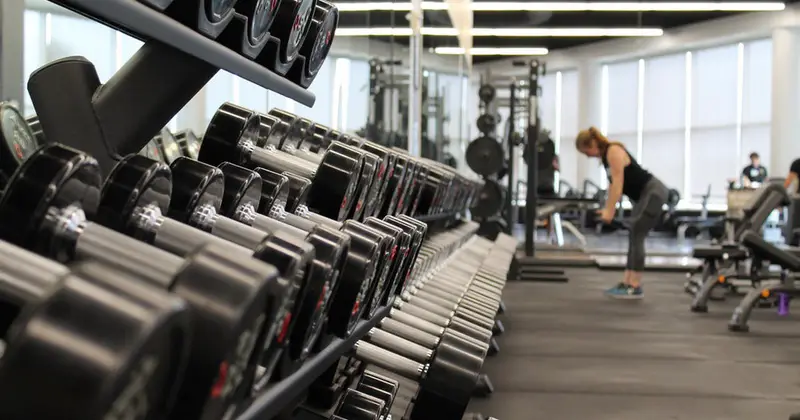By Jane Sandwood
Arrhythmia - having irregular heartbeats - affects millions across the globe, with up to 6.1 million people in the United States estimated to be battling the most common type of arrhythmia: atrial fibrillation.
Symptoms of arrhythmia can include shortness of breath and feeling faint but just because you have this condition does not mean you cannot enjoy sport and stay at the top of your game fitness-wise. The first step to take is always to see your doctor to ask about the type and intensity of exercise which are suitable to your condition.
For some, simply walking will do the trick; for others, full-body exercises are ideal. Note that there is a small list of genetic arrhythmia types for which exercise is discouraged. For atrial fibrillation and other types of arrhythmias, meanwhile, exercise is often recommended.

Prior Testing
Tests undertaken by your doctor to test for arrhythmia before recommending an exercise program include the treadmill stress test, in which you walk or run or a treadmill or ride a stationary bike while your doctor monitors your heart rate and rhythm. This will be able to tell if the exercise activity itself produces arrhythmias.
Another commonly used test involves simply wearing a Holter monitor: a ‘portable ECG that records your electrocardiographic signals for 24 hours or longer, thus giving your doctor a much better idea of what is occurring than a standard ECG reading. Your doctor might also use an echocardiogram to glean better insight into your condition; this test uses ultrasound waves to show your heart’s size and movement.
Starting Safely
Once your doctor has deemed that exercise is suitable for you, he or she may recommend that you take part in a cardiac rehabilitation program, so your progress can be monitored. In this type of program, your medical team shares specific information (including any treatment or medication you have had or are receiving, and relevant results of tests undertaken). Trainers would then supervise your workouts to ensure you are exercising at a level that is appropriate for you.
Why is Exercise so Important for those with Heart Conditions?
Aerobic exercises is recommended for all Americans, yet surveys indicate that only 22% of us get the recommended amount of exercise. Exercise is cardio-protective because it improves the muscles’ ability to draw oxygen from the circulating blood. Therefore, the heart doesn’t need to work so hard to pump blood to muscles. In the case of atrial fibrillation (AF), studies have shown that exercise (both high- and low-intensity) lowers the amount of time spent in AF, although it does not end AF completely.
The only permanent solutions include maze surgery - in which the surgeon makes small cuts in the atria that prevent the spread of disorganized electrical signals. Another possible end to arrhythmia is Botox, which when injected into the fat pads surrounding the heart prior to heart surgery, has been found to lower the chance of atrial fibrillation post heart surgery.
How Often Should You Exercise?
Try to exercise every day for at least half an hour, unless otherwise required by your doctor. Alternate your routine, completing lighter workouts (such as short walks) on some days with more energetic workouts (such as swimming or aqua aerobics) on others. Avoid exercising outdoors when the weather is hot and humid; remember that continuing to move is key.
In the summer months, consider signing up for a gym membership or going for a walk in an indoor area. You can continue to enjoy your walk outdoors early in the morning or after the sun has set to avoid the effect that heat can have on your heart. Avoid very cold or hot showers and saunas, which can be dangerous if you have a heart condition.
Keep Stress at Bay
In addition to performing regular aerobic and strength workouts, add at least one mindful activity into your routine - yoga, Tai Chi, meditation, and even controlled breathing have all been found to lower levels of stress hormone cortisol. This hormone, when present at high levels, can cause arrythmias to worsen. Studies have shown that mindfulness-based activities have long-term benefits which start from the first session. If you have a high-stress job, you need to tackle stress proactively, even if you only have time to download an app like Calm - which provides an array of breathing and meditation exercises that can take 10 minutes or less a day to complete.
If you have arrhythmias and another heart condition and you are undergoing a cardiac rehabilitation program, be patient with your progress and remember to exercise a bit of self-compassion. The latter involves being as kind to yourself as you are to loved ones and friends. If you feel tired one day and can’t do as much as you’d like to, remember that tomorrow is another day, and that every workout counts towards achieving your long-term goal of a healthier, happier life.
![]()
More From Fitstep.com
| How Do I Build a Bigger Butt? | |
| How to Spot Reduce Stomach Fat | |
| How I Got My Butt Kicked By a 68 Year-Old Woman | |
| Get a Ripped Six-Pack With Abdominal Sit-Ups |
Share This Page...
---
Home -> Fitness For Beginners -> Articles -> Arrhythmia Fitness



